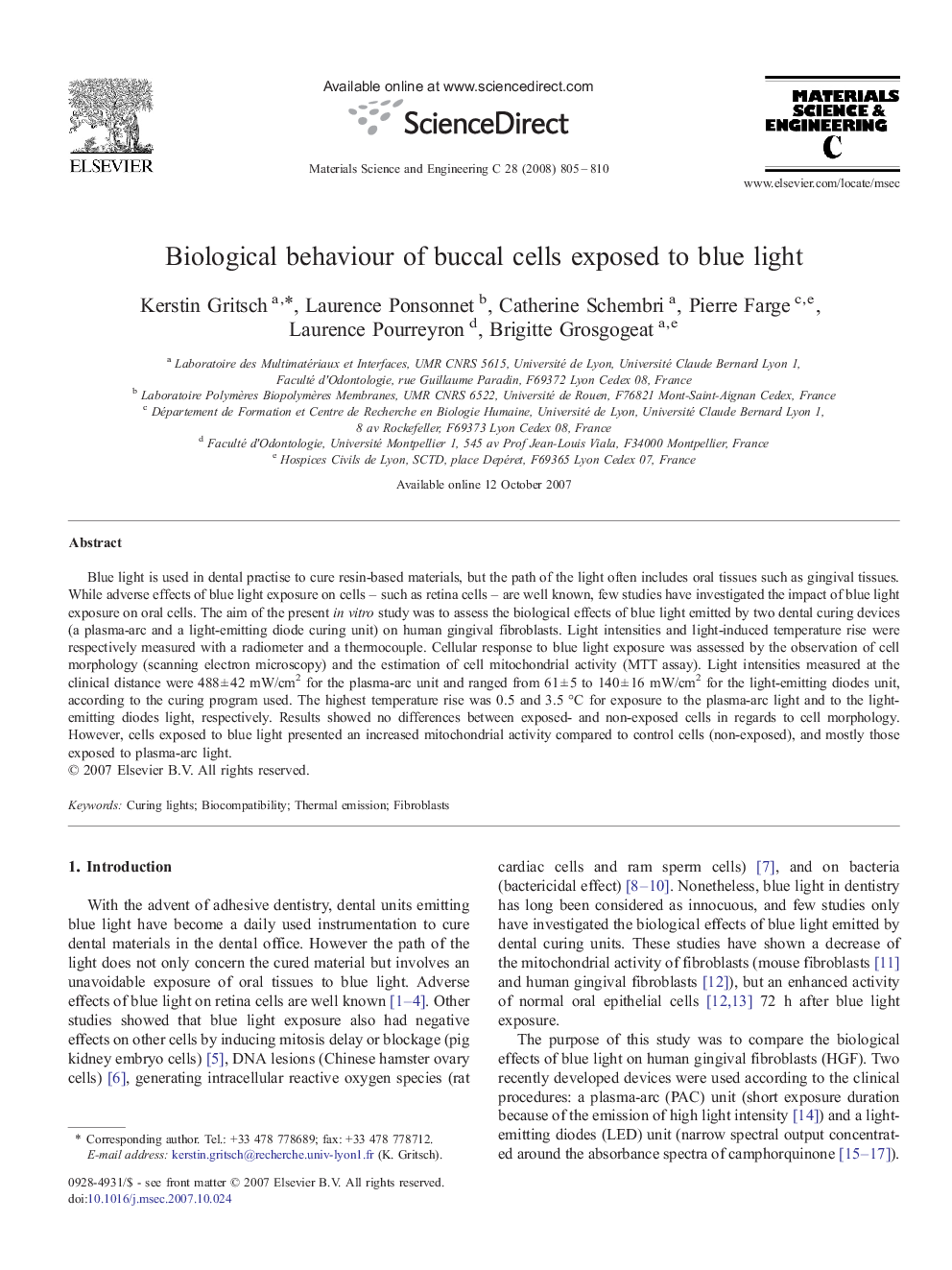| Article ID | Journal | Published Year | Pages | File Type |
|---|---|---|---|---|
| 1431089 | Materials Science and Engineering: C | 2008 | 6 Pages |
Abstract
Blue light is used in dental practise to cure resin-based materials, but the path of the light often includes oral tissues such as gingival tissues. While adverse effects of blue light exposure on cells - such as retina cells - are well known, few studies have investigated the impact of blue light exposure on oral cells. The aim of the present in vitro study was to assess the biological effects of blue light emitted by two dental curing devices (a plasma-arc and a light-emitting diode curing unit) on human gingival fibroblasts. Light intensities and light-induced temperature rise were respectively measured with a radiometer and a thermocouple. Cellular response to blue light exposure was assessed by the observation of cell morphology (scanning electron microscopy) and the estimation of cell mitochondrial activity (MTT assay). Light intensities measured at the clinical distance were 488 ± 42 mW/cm2 for the plasma-arc unit and ranged from 61 ± 5 to 140 ± 16 mW/cm2 for the light-emitting diodes unit, according to the curing program used. The highest temperature rise was 0.5 and 3.5 °C for exposure to the plasma-arc light and to the light-emitting diodes light, respectively. Results showed no differences between exposed- and non-exposed cells in regards to cell morphology. However, cells exposed to blue light presented an increased mitochondrial activity compared to control cells (non-exposed), and mostly those exposed to plasma-arc light.
Related Topics
Physical Sciences and Engineering
Materials Science
Biomaterials
Authors
Kerstin Gritsch, Laurence Ponsonnet, Catherine Schembri, Pierre Farge, Laurence Pourreyron, Brigitte Grosgogeat,
